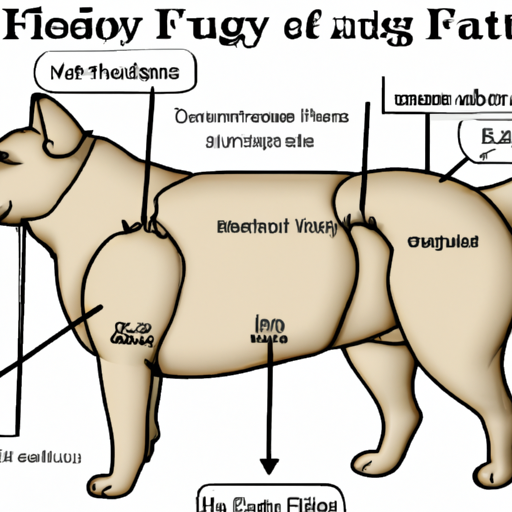1. Understanding Fatty Lumps in Dogs
As a caregiver for your furry friend, you may have noticed small, soft lumps beneath their skin. These are known as lipomas, or more commonly, fatty lumps. They often appear in middle-aged to older dogs, and while they may feel alarming to touch, they are typically harmless.
Lipomas are benign tumors made up of mature fat cells. They usually appear on the dog’s chest, abdomen, legs, or armpits. However, they can form anywhere on the body. They’re generally soft, movable, and painless, distinguishing them from other types of lumps that may be more worrisome.
2. Why Do Dogs Develop Fatty Lumps?
The exact reason why dogs develop fatty lumps remains a mystery. However, several factors may contribute to their formation:
- Age: Older dogs are more likely to develop lipomas.
- Breed: Some dog breeds, like Labrador Retrievers, are predisposed to lipomas.
- Gender: Female dogs are more prone to lipomas.
- Obesity: Overweight dogs have a higher risk of developing lipomas.
3. Are Fatty Lumps Dangerous?
You might be wondering, “Are these lumps dangerous?” Most of the time, the answer is no. Lipomas are benign growths, meaning they won’t spread to other parts of the body. However, that doesn’t mean they should be ignored. A small percentage of lipomas can grow into a more serious condition known as liposarcoma, a malignant tumor.
4. What To Do If You Find a Lump on Your Dog
If you discover a lump on your dog, don’t panic. Follow these steps:
- Examine the lump: Note its size, location, and any changes in color or texture.
- Monitor the lump: Keep an eye on the lump. If it grows quickly or your dog exhibits signs of discomfort, it’s time to contact the vet.
- Visit the vet: Your vet can determine if the lump is a benign lipoma or something more serious via a biopsy or fine needle aspirate.
5. Preventing and Managing Fatty Lumps
While you can’t completely prevent lipomas, maintaining your dog’s weight through a balanced diet and regular exercise can help reduce their risk. If your dog has a lipoma, monitoring it for changes and regular vet check-ups should be part of your care routine.
| Tips for Prevention and Management |
|---|
| Keep your dog at a healthy weight |
| Regular exercise |
| Regular vet check-ups |
Frequently Asked Questions
Q: Can I remove a lipoma from my dog myself?
A: No. Never attempt to remove a lump or growth from your dog at home. Always consult a vet.
Q: Do lipomas hurt dogs?
A: Most lipomas are painless unless they press against nerves or restrict movement.
Q: Can diet cause lipomas in dogs?
A: There’s no definitive evidence linking diet to lipoma development, but obesity is a risk factor.
Q: Should all lipomas be removed?
A: Not necessarily. Many lipomas do not need to be removed unless they are causing discomfort or health problems.



